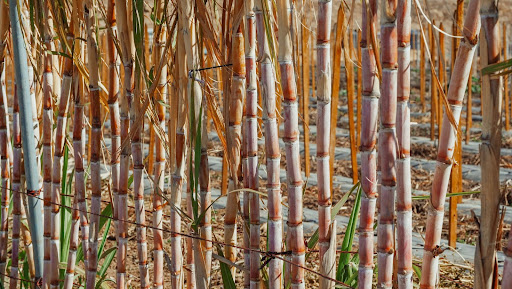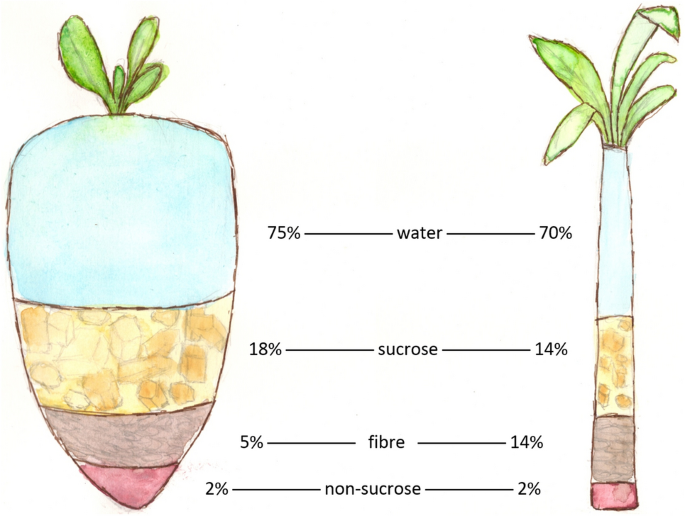When considering beet sugar vs cane sugar, some opt for one for cooking while others favor the alternative.
Discover the Uses and Benefits of Beet Sugar Vs Cane Sugar in Your Daily Diet Plan
Discovering the distinctive qualities of beet and cane sugar discloses greater than just their sweetening capacities; it highlights their special influences on health and wellness and cookeries. Beet sugar, understood for its refined flavor, is usually favored in fragile treats, whereas cane sugar, with its hint of molasses, includes splendor to robust meals. Each kind holds its own dietary account and glycemic implications, inviting a much deeper understanding of their roles in a balanced diet plan and sustainable consumption methods.
Beginning and Production Processes of Beet and Cane Sugar

The distinct climates and soil types required for expanding sugar beets and sugarcane add to distinctions in their cultivation methods and geographical distribution, influencing the economics and sustainability of their manufacturing. beet sugar vs cane sugar.
Nutritional Contrast Between Beet Sugar and Cane Sugar
Despite originating from different plants, beet sugar and cane sugar are nutritionally extremely similar, both largely containing sucrose. Each provides regarding 4 calories per gram, equating to approximately 16 calories per tsp. Structurally, both sugars are made up of about 99.95% sucrose, with minimal quantities of various other compounds like wetness and trace element, which do not dramatically modify their dietary accounts.

Inevitably, when selecting between beet sugar and cane sugar based on nutritional material alone, both deal the same advantages and downsides as they are basically kinds of the same molecule-- sucrose, offering quick energy without other nutrients.
Effect On Wellness: Glycemic Index and Caloric Content
Exploring further into the results of beet sugar and cane sugar on health and wellness, it is essential to consider their glycemic index and caloric content. Both sugars are identified as sucrose, which includes glucose and fructose. This make-up leads them to have a comparable effect on blood glucose levels. The glycemic index (GI) of both beet More Bonuses and cane sugar is around 65, classifying them as high-GI foods, which can trigger quick spikes in blood sugar levels. This is a vital facet for people managing diabetes or those attempting to stabilize their power levels throughout the day.
Each sort of sugar includes about 4 calories per gram, making their calorie content matching. For those keeping track of calorie intake, specifically when handling weight or metabolic wellness conditions, comprehending this equivalence is important (beet sugar vs cane sugar). Excessive intake of any kind of high-calorie, high-GI food can contribute to health and wellness problems such as obesity, heart disease, and insulin resistance.
Environmental and Economic Considerations of Sugar Manufacturing
Beyond health and wellness effects, the manufacturing of beet and cane sugar likewise increases considerable ecological and financial worries. Sugar beet growing has a tendency to need cooler environments and has a lower geographical footprint compared to sugar cane, which thrives in site here tropical regions.
In addition, using chemicals and fertilizers in both beet and cane sugar growing can cause soil deterioration and pollution, further impacting biodiversity and neighborhood water bodies (beet sugar vs cane sugar). The selection in between cultivating sugar beet or cane typically pivots on regional environmental problems and financial aspects, making the sustainability of sugar production a complex concern
Culinary Applications and Taste Differences
While the environmental and financial aspects of sugar production are undoubtedly considerable, the choice in between beet and cane sugar likewise influences cooking applications and flavor profiles. Beet sugar, stemmed from the sugar beet plant, is recognized for its incredibly neutral taste. This makes it a functional active ingredient in baking, where it does not modify the taste of other components. It liquifies swiftly and is optimal for use in cakes, cookies, and breads.
Walking cane sugar, check out this site drawn out from sugarcane, frequently preserves molasses traces, which give a distinctive splendor and depth. This mild molasses flavor boosts the complexity of baked goods, sauces, and sauces. It is especially preferred in things where a sugar undertone is desired, such as in brownies or gingerbread. Moreover, the minor variation in wetness content in between beet and cane sugar can affect the structure and uniformity of dishes, making cane sugar a favored selection for particular dishes that take advantage of its unique residential or commercial properties.

Verdict
To conclude, both beet and cane sugar have distinctive origins and manufacturing processes, using similar nutritional profiles with mild distinctions in salt material and flavor. While their effect on health and wellness, especially concerning glycemic index and calories, is comparable, the choice in between them usually steams down to environmental, economic variables, and certain culinary needs. Understanding these facets can lead customers in making notified decisions that straighten with their health goals and flavor preferences.